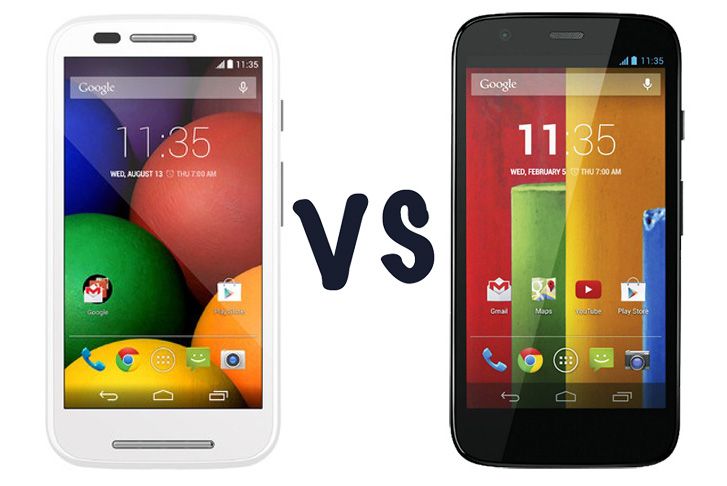When Motorola launched the Moto G, its aims were clear: to bring a quality device at a price that more could afford. It met those aims, producing a great device that was exceptional value for money - one of the best devices of 2013.
Looking to repeat the act, but reach even wider through an even more affordable device, comes the Motorola Moto E.
READ: Motorola Moto E preview
As the name would suggest, the E is a step down from the G. But aside from his alphabetical nomenclature, what exactly is the difference?
Design
Both the Moto E and Moto G offer similar design. The old phone is the larger, but both offer the same quality of build and construction. The Moto E doesn't feel like the budget phone, it feels nice and solid in the hand with a finish that's very close to that of the Moto G.
Both devices will let you pull off the back covers, with a range of colour accessories to make the device your own.
Screen
The new Moto E is a slightly smaller device, with a 4.3-inch 960 x 540 display in comparison to the Moto G's 4.5-inch one with a higher resolution of 1280 x 720. That will naturally make a significant difference in the sharpness of picture, even though the extra size on the latter device is negligible.
The devil here is literally in the detail: the Moto E at 256ppi is a good deal grainier than the Moto G at 326ppi, which gives you much smoother visuals.
Processor
In processing terms, the cheaper Moto E does cede ground to its older sibling. It sports a 1.2GHz dual-core Qualcomm Snapdragon 200 processor while the Moto G has a 1.2GHz quad-core Qualcomm Snapdragon 400 chipset. The latter will be considerably more efficient with multiple tasks, especially when performed at the same time.
Both devices have 1GB of RAM on board.
Camera
The rear camera for the Moto E is nigh-on identical to the one on the Moto G. Both have 5-megapixel sensors. However, there's a marked difference between the front cameras. The Moto G has a 1.3-megapixel "selfie" cam and the Moto E has no front-facing camera at all. Nada. Zilch.
We do wonder about the thinking behind this because surely the entry-level is the ideal market for younger phone owners who are likely to enjoy a spot of selfie action.
There's also no flash on the rear, which is equally odd.
Storage
The Moto E comes with 4GB of internal storage space, the Moto G comes in 8GB and 16GB options.
This seems like no contest, but the Moto G does not have a microSD card slot for expansion, while the Moto E does. That's a better move in our opinion.
A 4G Moto G with a microSD card slot is on its way, however, although only available with 8GB internal storage.
Battery
We expect the battery life of both devices to be similar regardless of the fact that the Moto G has the larger cell. It sports a 2,070mAh battery in preference to the Moto E's 1,980mAh. It's really down to what those batteries are tasked with, and the smaller, less power hungry processor of the Moto E will balance things out, as will the smaller display.
Conclusion
To be completely honest, it's an unfair battle. The considerably cheaper Moto E is suitably less specified and will therefore not suit those who wish to run beefier apps or do more with their phones.
But considering that, at £89, the Moto E is as entry-level as they come, but still proffers a decent Android 4.4 KitKat experience it will be popular no doubt.

